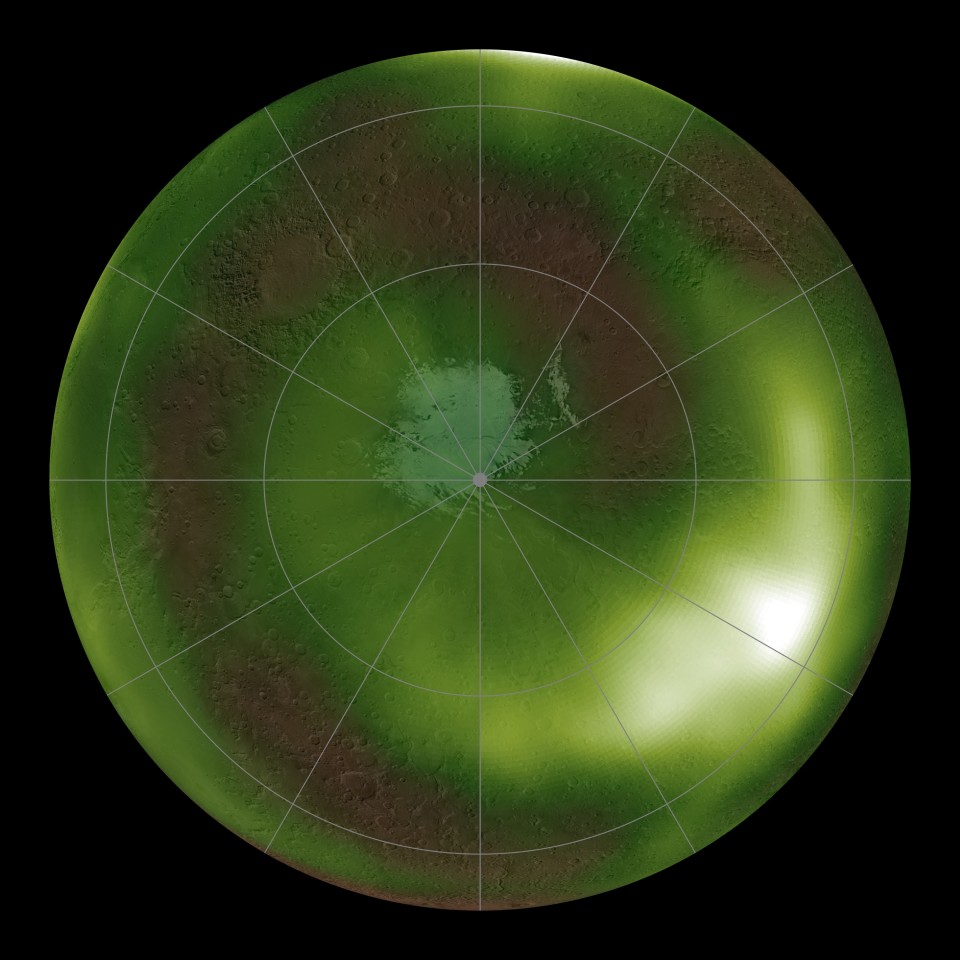A NASA spacecraft has observed a pulsing glow coming from Mars. Huge spots of ultraviolet light were seen in the night sky, pulsing with uncanny regularity – exactly three times every night. The find highlights (literally) the atmospheric processes and circulation patterns of the Red Planet.
The observations were made by the Mars Atmosphere and Volatile EvolutioN (MAVEN) spacecraft, which studies the Red Planet from orbit. The satellite saw the glow on the night side of Mars at an altitude of about 70 km (44 mi), with the brightest spot measuring about 1,000 km (600 mi) wide. In these false-color images, the green and white areas represent the intensity of the ultraviolet light, while the global shot of Mars has been added digitally for context.
But it’s the specificity of the light that’s most intriguing. MAVEN data revealed that the UV light only shows up during the Martian spring and fall seasons, and it pulses exactly three times each night. The show begins just after sunset and it’s all over by midnight.
The mechanism that drives the glow is well understood. Ultraviolet light from the Sun strikes the Martian atmosphere and splits carbon dioxide and dinitrogen into their constituent carbon, oxygen and nitrogen atoms. The winds then blow these atoms around to the night side of the planet, where they begin to sink back down towards the surface. As they do, the nitrogen and oxygen atoms combine to form a nitric oxide molecule, and in the process they emit a photon of ultraviolet light.

NASA/MAVEN/Goddard Space Flight Center/CU/LASP
This “nightglow” effect is well-documented here on Earth and has been detected on Mars before, but this marks the first time it’s been seen to pulse so rhythmically. And interestingly, it was seen to spiral towards the south pole of the planet, for reasons which remain unknown.
The team is using these glows to help map the circulation and turbulence of the Martian atmosphere. In future work, the researchers plan to examine the nightglow side-on, by looking just above the edge of the planet. This should help improve our understanding of the winds and seasonal changes.
“MAVEN’s main discoveries of atmosphere loss and climate change show the importance of these vast circulation patterns that transport atmospheric gases around the globe and from the surface to the edge of space,” says Sonal Jain, an author of the study.
The study was published in the Journal of Geophysical Research. An animation of the glow can be seen in the video below.
Mars Nightglow Animation from MAVEN Observations
Source: NASA
Source of Article